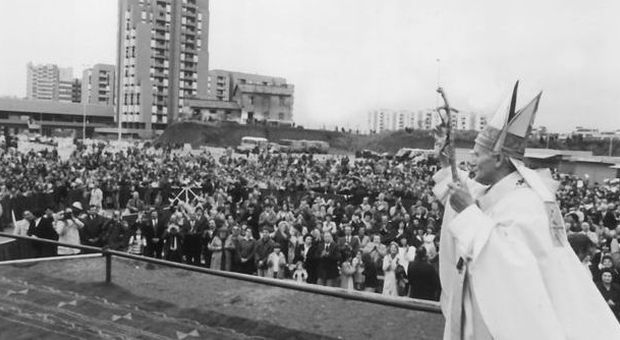I could not imagine however that I would become a direct collaborator with John Paul II. I met him for the first time in the autumn of 1984. I was one of the vice-presidents on the committee which was preparing an Italian church conference in Loreto, which was very important to John Paul II. For this reason, the Holy Father wanted to meet me and invited me to dinner. I was impressed by his great attention when listening to me, together with the precision of his questions. I was also struck by his simplicity and the immediate rapport I was able to establish with him. I saw that the Pope well understood the Italian situation and above all, I agreed with his convictions regarding was what required by Italy and the Italian church at that time. When subsequently, in June 1986, I became Secretary of the CEI (Italian Episcopal Conference) and later in 1991 the Pope’s Vicar for Rome and president of the CEI, I was able to see ever more clearly the great gift that had been given me to be near a person like him, working by his side and being guided by him, breathing the atmosphere of faith in which John Paul II lived.
The secret of this Pope, who is now proclaimed a Saint, was the fact of his extraordinary closeness to God. He was truly, and I want to say fundamentally, a “man of God”. He had a keen intelligence, a vast culture and a very concrete sense of reality, but his faith had nothing to do with intellectualism, it was simple like a child’s and truly rocklike. This faith was the fundamental dimension of his life and guided all his choices. Therefore John Paul II was above all a man of prayer, and to prayer he dedicated the greatest part of his time and energy. I well remember the first trip I made with him by helicopter from Castel Gandolfo to Piani di Pezza in Abruzzo for a large meeting with the scouts. A helicopter’s cabin is small and the noise is great. The Pope prayed and at the same time, to my surprise, we travelling companions talked. Monsignor Stanislao said to me not to worry because when the Pope prayed, nothing distracted him.
At the same time, John Paul II was a real man who knew how to savour and fully appreciate the richness of life: the beauty of art and of nature, the vitality of sport, the loyalty of friends, the courage to face demanding challenges. So being with him one became aware that God doesn’t live in inaccessible places, but is the Lord of life who wants to be at the centre of our lives.
On 9th November 1978, at the beginning of his pontificate when speaking to the Roman clergy, he said: “I am deeply aware of having become Pope of the universal Church because of being Bishop of Rome. The ministry of Bishop of Rome is the root of universality”. These words were for him a guideline of behaviour, to which he was constantly faithful. He threw himself immediately therefore into the service of the Church of Rome with an overwhelming and amazing impetus, which surprised everyone. All the time his strength supported him, he maintained this rhythm, as I was able to observe at the beginning of the Nineties, when I became his Vicar.
The most relevant dimension of his ministry as bishop was in the visits John Paul II made to the Rome parish churches. He began early on, visiting on 3rd December 1978 the parish of San Francesco Saverio in Garbatella, where he had served when he was in Rome as a student priest. Then, at the rate of fifteen parishes a year, he visited 301 of the 335 parishes in the diocese, until 17th February 2002 when, already suffering greatly, he visited with great fatigue the new parish of St Enrico. That was, unfortunately for him, the last parish he was able to visit. But later he received 16 parishes in four meetings in the Paolo VI Hall in the Vatican, celebrating Mass with them. But even so he often asked me: “When shall we visit the parishes?”. The last time he asked me was in January 2005. On that occasion Monsignor Stanislao tried to reassure him, saying that the visits to the parishes took place every Sunday by the Vicar Cardinal, who was me. The Pope promptly replied, “But the bishop of Rome is me”. The sense was: I cannot delegate to another the obligation to meet the parishes which belong to me as bishop.
John Paul II’s solicitude for Rome showed itself naturally in many other forms. I remember the visit to the Campidoglio on the 15th January 1998. The Pope concluded his speech reminding us in a play on words, which synthesised his approach to this extraordinary city: read backwards, the word “Roma” becomes “Amor” (Love). That, according to him, was Rome’s mission in the world.
Translation by Antoinette Canini
© All rights reserved
© RIPRODUZIONE RISERVATA
